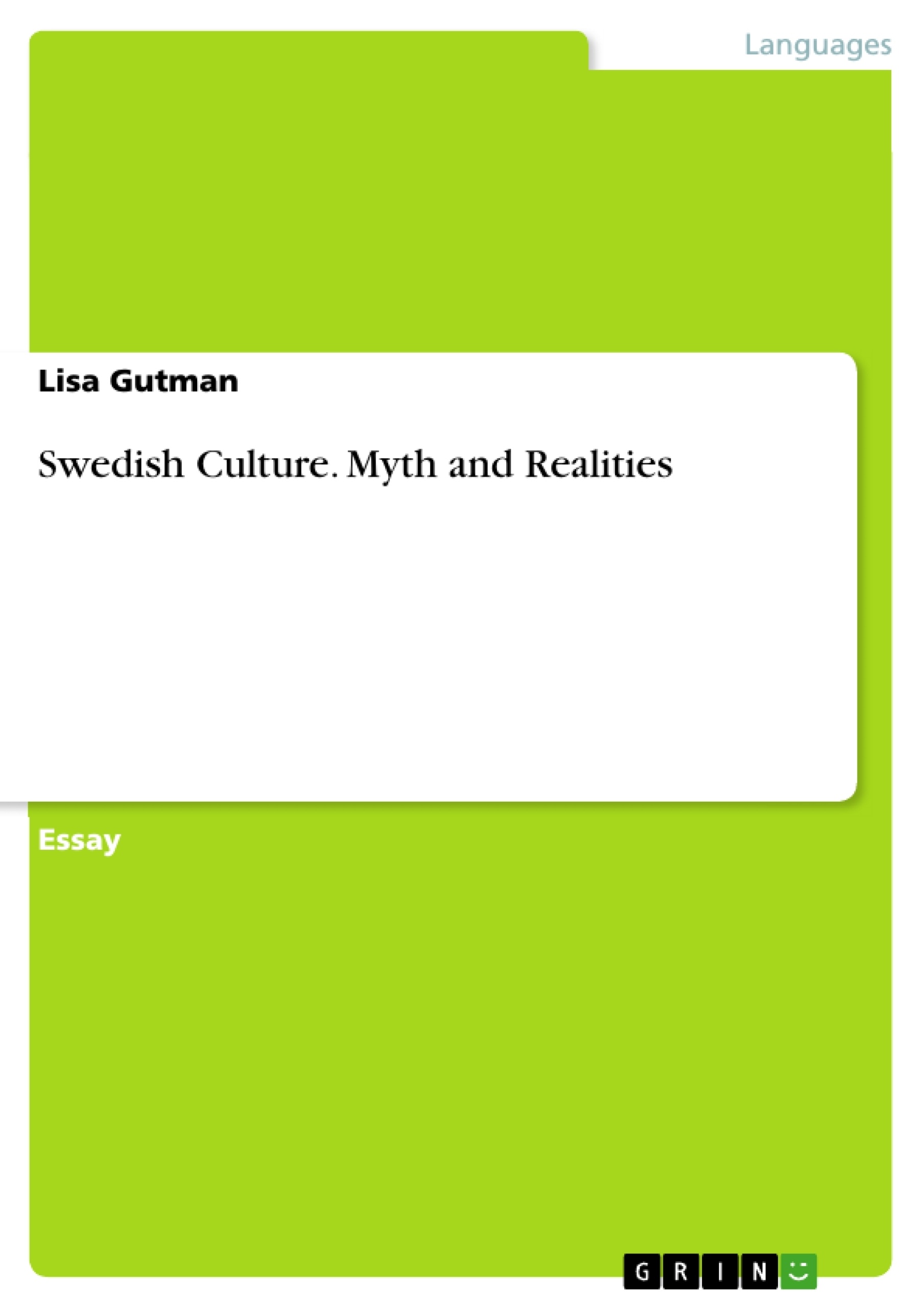This essay provides insights about the myth and realities of Swedish culture – concerning sexuality and nature, Christmas, Midsummer, marriage and raising children as well lagom and standing in line.
Many traditions, cultural habits and customs provoke a counteraction, a rebellion so to say. This might be the case in Swedish restrictiveness as well, when you look at young Swedes going out on a Saturday night. They are loud, drunk, refuse to form an orderly queue and they are certainly not always well-behaved, but more like children finally allowed to play outside after being held in a boring classroom all week.
Table of Contents
- QUESTION 1: sexuality & nature
- QUESTION 2: Christmas, Midsummer, marriage & raising children
Objectives and Key Themes
This text aims to explore certain aspects of Swedish culture, contrasting historical realities with modern expressions. It examines how cultural perceptions have evolved, particularly concerning sexuality and nature, and how traditions are maintained and adapted within the context of modern life.
- Historical and contemporary views of sexuality in Sweden
- The evolution of the relationship between Swedes and nature
- The celebration of Christmas and Midsummer in Sweden
- The role of tradition and its adaptation in modern Sweden
- The interplay between cultural construction and societal norms
Chapter Summaries
QUESTION 1: sexuality & nature: This section contrasts historical perceptions of sexuality in Sweden with contemporary attitudes. Historically, a patriarchal structure prevailed, limiting women's legal status and shaping cultural narratives around sexuality. Limited sources suggest female sexuality was viewed as passive, while active female sexuality was potentially threatening to male virility, reflecting power dynamics. Homosexuality was largely invisible in pre-industrial society, despite potential opportunities for same-sex encounters. In stark contrast, modern Sweden celebrates diversity in sexuality through events like West Pride, highlighting a significant societal shift in acceptance and celebration of LGBTQ+ lifestyles. The chapter then shifts to explore the Swedish relationship with nature, contrasting the peasant view of nature as a sphere of production with the bourgeoisie's romanticized idealization. The romanticized view of nature, rooted in 19th-century ideals, became linked with national identity and continues to significantly influence modern Swedish society, expressed through daily habits and a widespread appreciation of the natural environment.
QUESTION 2: Christmas, Midsummer, marriage & raising children: This section analyzes the significance of Christmas and Midsummer in modern Swedish culture. Christmas is presented as a complex blend of family togetherness, nostalgia, and potential conflict, with pre-Christmas rituals blending universal and local elements. While the Christmas tree is of German origin, it is deeply ingrained in the Swedish celebration. The chapter notes a trend towards a more relaxed and child-centered approach to Christmas, contrasting with the pressure for a perfect celebration. Midsummer, centered on the summer solstice, is presented as a popular family-oriented outdoor celebration, emphasizing a connection to traditional practices and folk traditions through activities like maypole dancing. The chapter suggests a strong sense of national identity linked to these holidays.
Keywords
Swedish culture, sexuality, nature, tradition, Christmas, Midsummer, patriarchy, homosexuality, national identity, folklore, modernization, societal change, cultural evolution.
Frequently Asked Questions: A Comprehensive Language Preview of Swedish Culture
What is the main focus of this text?
This text explores various aspects of Swedish culture, comparing historical realities with modern expressions. It examines how cultural perceptions have evolved, particularly regarding sexuality and nature, and how traditions are maintained and adapted in modern life. The analysis contrasts historical and contemporary views, highlighting the interplay between cultural construction and societal norms.
What key themes are addressed in the text?
The key themes include historical and contemporary views of sexuality in Sweden, the evolution of the relationship between Swedes and nature, the celebration of Christmas and Midsummer, the role of tradition and its adaptation in modern Sweden, and the interplay between cultural construction and societal norms.
How does the text approach the topic of sexuality in Sweden?
The text contrasts historical perceptions of sexuality with contemporary attitudes. It discusses how a patriarchal structure historically limited women's legal status and shaped cultural narratives around sexuality. It contrasts this with modern Sweden's celebration of LGBTQ+ lifestyles, highlighting a significant societal shift.
What is the text's perspective on the relationship between Swedes and nature?
The text explores the contrasting views of nature: the peasant view as a sphere of production versus the bourgeoisie's romanticized idealization. It shows how this romanticized view, rooted in 19th-century ideals, became linked with national identity and continues to influence modern Swedish society.
How are Christmas and Midsummer presented in the text?
Christmas is portrayed as a complex blend of family togetherness, nostalgia, and potential conflict, with pre-Christmas rituals blending universal and local elements. Midsummer, centered on the summer solstice, is presented as a popular family-oriented outdoor celebration, emphasizing a connection to traditional practices and folk traditions.
What is the significance of tradition and its adaptation in modern Sweden according to the text?
The text highlights how traditions are maintained and adapted within the context of modern life. It shows how both Christmas and Midsummer, while rooted in older traditions, are celebrated in ways that reflect contemporary values and family structures, often with a more relaxed and child-centered approach.
What are some key words associated with the text?
Key words include Swedish culture, sexuality, nature, tradition, Christmas, Midsummer, patriarchy, homosexuality, national identity, folklore, modernization, societal change, and cultural evolution.
What specific historical periods or events are referenced in the text?
The text references pre-industrial Swedish society to illustrate historical views on sexuality and the development of romanticized views of nature during the 19th century.
What are the overall conclusions or arguments presented in the text?
The text argues that Swedish culture has undergone significant changes, particularly concerning sexuality and the relationship with nature. It demonstrates how traditions are both preserved and adapted to fit modern societal values and structures, highlighting a dynamic interplay between historical legacies and contemporary expressions of culture.
- Quote paper
- Lisa Gutman (Author), 2014, Swedish Culture. Myth and Realities, Munich, GRIN Verlag, https://www.grin.com/document/345586




